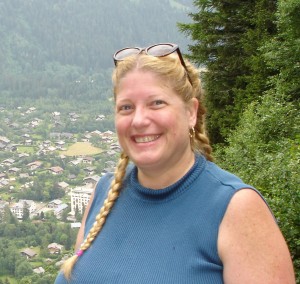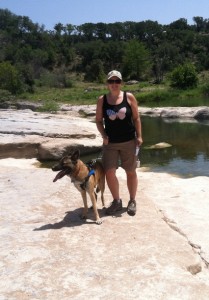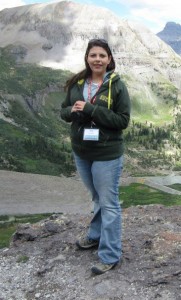The University of Texas Institute for Geophysics recently welcomed three minority-serving public school district science teachers as “education interns” to take in a geoscience education project this summer.
Sponsored by the National Science Foundation Geoscience Education Program, the DIG Texas (Diversity and Innovation for Geosciences in Texas) Instructional Blueprint project is creating five example online course road maps for use in high school earth and space science classes. Each blueprint comprises nine curated units with reviewed high-quality earth science learning activities.
A blueprint is a pathway for educators to follow as they teach a one-year earth science course. It identifies which online resources to use of the thousands available, provides guidance on the order and the length of time required.
The teachers who are working from the offices of the Institute for Geophysics are Elaine Bohls-Graham, Belinda Jacobs, and Alejandra Martinez.

Elaine Bohls-Graham, a chemistry and physics teacher at A.N. McCallum High School in Austin, declares that she always “manages to tie in my geology,” referring to her favored field of science.
“I have always been passionate about geology, and therefore will find any excuse, reason, justification to collaborate with other geoscientists, ‘DIG’ into any area of geoscience, and play in the field,” Bohls-Graham added.
During her more than 20 years as an educator, she has been a participant with UT, including the PT3 Project, VaNTH Fellow, cooperating teacher with the UTeach program, and a regular participant in NSF and NASA-sponsored geoscience education projects at UTIG.
“Within AISD, I have contributed to curricula for middle school science, Integrated Physics and Chemistry (IPC), Geology, Meteorology and Oceanography/Earth System Science (GMO/ESS) and chemistry. Additionally, I have participated in the Capital City Regional Collaborative as Chemistry Science Teacher Mentor (STM), a District Technoscientist and I am on the McCallum campus Information Technology/Educational Technology Resource Committee (IT/ETRC),” she said.
Her latest continuing project was to develop a map and field guide for use at Big Creek Reserve, as part of her Master of Arts degree work in Science and Mathematics Education with a concentration in Geoscience.

Belinda Jacobs is a science teacher at Cedar Ridge High School in Round Rock, Texas. She currently teaches physics, astronomy and will begin her second year teaching an earth and space science class that she initiated last year as an implementing teacher of the DIG Texas Blueprints curriculum grant project.
Jacobs said, “Though I have been teaching science in both the middle and high schools for the past nine years, my passion for the earth sciences was rekindled during my participation in UTIG’s NSF-sponsored TXESS Revolution project, leading me to pursue and earn my M.S. in Geosciences.”
As part of that program, Jacobs compiled and developed a field guide with activities for the Central Texas area. She has also participated in middle school curriculum writing and the Region XIII Central Texas Regional Collaborative.
During the 2013-2014 school year, Jacobs was a member of the Round Rock ISD Instructional Materials Adoption Committee for Physics, Astronomy, Earth and Space Science. She also served as a member of the Astronomy curriculum collaboration team. In addition, Jacobs is creating new earth and space science curriculum documents for RRISD.

Alejandra Martinez is from Eagle Pass, Texas and teaches seventh grade science at Memorial Junior High in Eagle Pass ISD.
She graduated from Texas A&M University (TAMU) with a Bachelor of Science in Wildlife and Fishery Sciences in 2005. However, her geophysics interest soon took root with her participation in TAMU’s G-Camp, a program featuring field courses in Texas, New Mexico and Colorado for fifth-12th grade teachers.
The experience worked out quite well for Martinez, who spoke at the GSA (Geological Society of America) South Central Meeting in Austin last year about her experiences and earned the event’s outstanding teacher presentation award.
This summer, Martinez will take part in G-Camp II, an advanced program including teachers chosen from among participants in the past five years of G-Camp.
Last August, Martinez sailed aboard the R/V Nautilus for the Ocean Exploration Trust as a Communications Fellow.
“We looked at the deepest known hydrothermal vents at the Mid-Cayman Rise,” she recalled.
Led by the Jackson School of Geosciences at The University of Texas at Austin and the College of Geosciences at Texas A&M University, Texas’ two flagship geosciences programs, DIG Texasis a community of geoscientists and educators across Texas working toward enhanced diversity in geosciences in Texas, as well as improved geosciences literacy among Texas high school science teachers.The mission of DIG Texas is to establish a sustainable network of high school and college educators to recruit students from the increasingly diverse Texas population into college-level geosciences and to support them throughout their academic careers.
